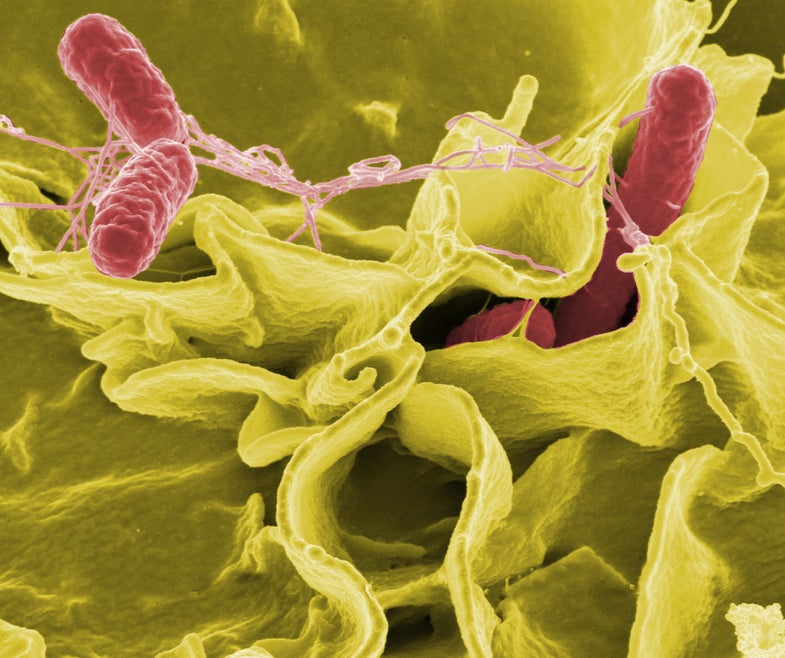Warmer Temperatures Could Mean More Salmonella Outbreaks
If you live in a coastal area, beware

Vomiting, fever, and diarrhea—these nasty symptoms are the embodiment of the crippling effects that salmonella can have on the body. In the past, scientists have linked outbreaks of the bacterial infection to extreme weather. Now researchers in Maryland have looked back at salmonella data over the past 10 years to determine that global climate change—which has been linked to warmer temperatures and more extreme weather events—may make salmonella outbreaks more frequent, especially in coastal areas. The study was published recently in the journal Environment International.
Salmonella usually makes its way to human contact first from animal stool that is used as fertilizer. People become ill from the bacteria if they ingest it, often through poorly cooked meat or unwashed produce. The bacteria flourishes in warmer temperatures. Combine that with more flooding events that carry bacteria-filled feces to places where humans get their drinking water or grow their crops, and you’ve got the potential for a serious outbreak.
“Salmonella, just like any bacteria that responds well to heat, is going to spread whenever you have warmer temperatures,” study author Kristi Shaw told Climate Central. “We wanted to look past outbreaks caused by a group of people getting sick at a church cookout or something like that, to the less defined outbreaks caused by environmental variables like temperature.”
Shaw and her colleagues looked at the record of all the salmonella cases from 2002 to 2012, and compared it to weather data from the National Climatic Data Center from 1960 to 2012. They found that each period in which there were more days with temperatures over the 95th percentile, the risk of getting salmonella increased about 4 percent; in periods with the amount of precipitation over the 90th percentile, the increase was almost 6 percent. Both effects were more pronounced in coastal areas.
This is the first study to link climate change to greater risk of salmonella infection, but the results aren’t surprising, outside researchers told Climate Central. The study authors note that these results held true within the state of Maryland but may not be the same all over the country, where soil types and land use may vary. However, the researchers call for government and public health officials to put new safeguards in place to ensure the food and water that people receive is safe, at least in Maryland but likely beyond.